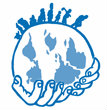Reports Search
Politico
… As the who’s who of global health descends on Geneva in the coming days for the World Health Assembly — the annual
Geneva Health Files
WHO
he COVID-19 pandemic has reaffirmed the urgent need for a multi-disease, end-to-end medical countermeasures platform
Read the report:
WHO
This concept note describes a WHO-convened consultative process to design a multi-disease, multitool, end-to-end plat
Read the report:
IJHPM
Reflecting on the up-to-date global experience of the coronavirus disease 2019 (COVID-19) pandemic is of crucial impo
Read the report:
Save the Children
The COVID-19 pandemic has highlighted that as a global community, we need to strengthen systems to prevent, prepare f
Read the report:
Civil Society
We are writing on behalf of some public interest stakeholders invited to participate in the Pandemic Treaty
Read the report:
Pagination
- Previous page
- Page 37
- Next page
